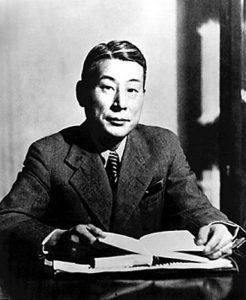emerge during
How Japanese Schindler in the USSR saved thousands of Jews from concentration camps: Tiune Sugihara
 Thanks to the 1993 Oscar-winning film directed by Stephen Spielberg, the whole world learned the story of Oscar Schindler, a German businessman and member of the Nazi party who saved hundreds of concentration camp Jews during the Holocaust. But even today, few have heard of the Japanese Tiune Sugihara, a Japanese diplomat who worked in the Lithuanian consulate in 1940 and repeated Schindler’s feat.
Thanks to the 1993 Oscar-winning film directed by Stephen Spielberg, the whole world learned the story of Oscar Schindler, a German businessman and member of the Nazi party who saved hundreds of concentration camp Jews during the Holocaust. But even today, few have heard of the Japanese Tiune Sugihara, a Japanese diplomat who worked in the Lithuanian consulate in 1940 and repeated Schindler’s feat.
This story, which can be called one of the most striking in the history of the war, is rarely mentioned even in historical reports on the events of the Holocaust.
In 1940, Sugihara worked as Japan’s Vice Consul in Kaunas, which was then the capital of Lithuania. The city had a large and prosperous Jewish community of about 30,000 people. Between 1939 and 1940, the number of Jews in the city increased by several thousand people fleeing persecution in Nazi-occupied Poland. The refugee stories of the horrors that befell the Jews under Nazi rule literally forced blood to be washed away in the veins of local residents. Continue reading
THEORIES OF “NIHONDZINRON” IN JAPANESE BILLS
 In the near future, the Japanese government plans to put into circulation new-type banknotes with new “faces.” Gradually, such money will supersede the existing banknotes of the 1984 model. An interesting feature of Japan is that the banknotes depict the “nichondzinron” theorists [I], great enlighteners, people who made a huge contribution to the formation of the Japanese worldview during the Meiji period.
In the near future, the Japanese government plans to put into circulation new-type banknotes with new “faces.” Gradually, such money will supersede the existing banknotes of the 1984 model. An interesting feature of Japan is that the banknotes depict the “nichondzinron” theorists [I], great enlighteners, people who made a huge contribution to the formation of the Japanese worldview during the Meiji period.
Why aren’t banknotes, for example, the first Minister of Finance of this period or the first president of the First National Bank? After all, these people had to re-create the financial system of Japan according to the Western model. “According to the results of the American trip, Deputy Minister of Finance Ito Hirobumi [II] proposed urgent reforms in the financial sphere, namely, to pass a law on the issue of government securities, create modern Continue reading
A LITTLE ABOUT CAGURA
 The Japanese term “Kagura” consists of two characters, the first of which means “Divine”, “sparkling”, and the second – in this context – “music”. This is the name of cult performances, known in Japan since the 7th century, performed at first near the Kagu-Yam mountains. Once it was an active volcano, then metal was mined here. The land of Kagu-Yam was always considered sacred and used in fortune-telling. According to legend, the Kagu-yama fell from heaven to earth and, thus, is not just the venue for the first ritual performances, but is actually connected with the events of the ancient mystery.
The Japanese term “Kagura” consists of two characters, the first of which means “Divine”, “sparkling”, and the second – in this context – “music”. This is the name of cult performances, known in Japan since the 7th century, performed at first near the Kagu-Yam mountains. Once it was an active volcano, then metal was mined here. The land of Kagu-Yam was always considered sacred and used in fortune-telling. According to legend, the Kagu-yama fell from heaven to earth and, thus, is not just the venue for the first ritual performances, but is actually connected with the events of the ancient mystery.
The performance is a vivid sight, colorful pantomime, accompanied by playing the drums and flute (sometimes – singing). Subsequently, the use of kagurs was transferred to special sites in front of Shinto temples.
In essence, Kagura is a theatrical parable, allegorically revealing the relationship of man and nature. The Japanese have always been trusting-reverently treated nature, with a heightened sense of the deep, sometimes hidden meaning of the environment. Hence the attention to everything that happens, where there is nothing worthy of interest. Not surprisingly, in Japan there are many holidays associated with the change of seasons, which are elevated to the degree Continue reading




